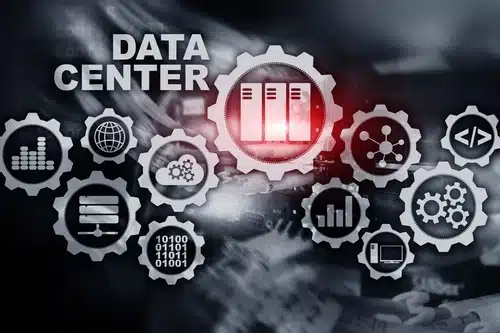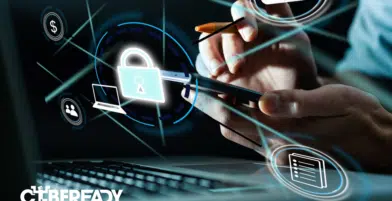An excellent analogy for cybersecurity is the old proverb, “the mouse is not the thief; the hole is.” In the case of theft, the blame and responsibility lie first and foremost on the circumstances allowing the theft to occur.
After a 50% increase compared to the previous year, Cyberattack attempts reached a record in 2021. They continue to become more sophisticated, and securing your organization’s cybersecurity posture has become more complex. One of the essential weapons in the fight against cyber security for InfoSec professionals and organizations is the SOC (Security Operations Center). It’s time to stop blaming the mouse.
SOC (sometimes known as ISOC – Information Security Operations Center) is the central hub for cybersecurity in an organization managed by an internal team or a third-party vendor. A facility, team, or department constantly monitors and analyzes the organization’s IT infrastructure to detect and address security threats in real-time. The SOC is often a pivotal point of collaboration and coordination between the organization’s security actions, practices, and technological resources.
In this post, we will give you the tools and knowledge needed for creating a highly successful SOC by explaining and discussing:
- Cyber threats mitigation
- Roles, responsibilities, and structure
- Operation and deployment models
- Managing challenges
- Future developments
The Goals of a SOC
A SOC’s aims to protect the organization from cyberattacks and data breaches. As the SOC team implements the organization’s overall cybersecurity strategy, it should engage in threat intelligence and analysis while taking preventive and responsive measures:
- Manage and enforce security compliance.
- Execute routine maintenance, update, and upgrade security tools (applying software patches, updating firewalls, etc.).
- Conduct penetration and vulnerability testing.
- Study and track old and new malware and attack vectors.
- Prepare incident response plans.
- Handle phishing attacks and conduct preventive training –
- Detect phishing attack vectors and targets, catalog popular phishing URLs and block them.
- Use this knowledge to teach employees about the latest phishing attack methods and train them on how to respond.
- Capture events from logs and security systems, and analyze them to identify and respond to security incidents.
- Monitor for malicious malware markers’ file activity within traffic logs.
- Detect and mitigate Distributed Denial of Service (DDoS) attacks and Botnet activities.
- After an incident is contained and eradicated, remediate any damage and return impacted assets to their pre-incident stage.
- Perform security incidents Investigations and analysis.
- Ensure that all parties (users, regulators, law enforcement, etc.) are notified of security incidents in accordance with regulations and that the required data is retained for evidence and auditing.
Staff Roles and Responsibilities
Typically, the SOC team will include:
1. SOC Manager
The SOC manager is responsible for running the team and its activities and governing all security operations. They report to the CISO (chief information security officer).
2. Security Engineers and Architects
These professionals plan, build, and administrate the enterprise’s complete security architecture. Their job encompasses testing and evaluating technological tools and then implementing, maintaining, and updating them.
3. Incident Responders (or security analysts)
Responsible for configuring and monitoring security tools and using them to detect threats and incidents. They go over received alerts, classify, map, and prioritize them, and finely hand all this information to the security investigators
4. Security Investigators (or security analysts)
After receiving the information from the incident responders, the security investigators identify all affected elements (hosts, endpoints, users, devices, etc.). They continue to evaluate the termination plan and implement it to mitigate and contain the incident or threat. During this process, they usually analyze by investigating and determining attack sources, duration, techniques, etc.
5. Threat Hunters (also called expert/ advanced security analysts)
These are usually the most experienced members of the SOC team that focus on identifying, mitigating, and containing advanced threats such as new and unknown ones and threats that succeeded in penetrating automated defenses. In many cases, they also investigate and analyze past incidents and their mitigations.
The SOC team may include other members (especially in large organizations) such as the Director of Incident Response, who communicates and coordinates incident response, and forensic investigators specializing in data retrieval and restoration of affected devices.
Operating a SOC
SOC Deployment and Operating Models
Designing an operating model is essential to building a strong functional SOC. The first step is to understand and map all threats facing your organization and all of its assets needing protection. Remember that different threats and assets can lead to different SOC structures and operations.
The second step is to decide on a deployment model such as –
- Classic Dedicated SOC – in-house facility with dedicated full-time staff, operating 24/7.
- Co-managed SOC – on-site monitoring solutions, with some responsibilities outsourced to external staff.
- Multifunction SOC/NOC (network operations center) – this model has a dedicated team, facility, and infrastructure. Its function includes IT operations, compliance, and risk management.
- Command SOC – multiple SOCs distributed across various locations and regions (often used by global organizations). The command SOC typically controls other SOCs, coordinates their activity, and performs forensics and recovery processes.
- Virtual SOC (VSOC) – full-time and part-time staff working from different places and regions with no dedicated facility or infrastructure (this term is sometimes used for outsourced SOC – see next).
- MSSP/MDR SOC (SOC-as-a-service) – many enterprises outsource their SOC to be run by Managed Security Service Providers (MSSP) or Managed Detection and Response (MDR). An outsourced SOC can also be co-managed with in-house security staff.
Finally, design the operating model in light of the above to conduct the following core functions:
- Information, planning, procedures, infrastructure, and tools:
- Threat Intelligence (TI) – information about current cyber threats, attack vectors, indicators of compromise (IOCs), bad actors, etc. This information should direct the SOC’s capabilities building and operations. In smaller organizations, this capability could be a third-party intelligence feed.
- Analytic and Planning Development – turning threat intelligence into detection rules and procedures within the SOC tools.
- Infertacture & Engineering – installing, updating, and maintaining the SOC tools and ensuring all the systems are running.
- Detection and Response – the classic core activity and capability of SOC. Detect any abnormal or suspicious activity, identify attacks and incidents, and then respond to mitigate, contain and remediate them:
- Proactive Threat Hunting – proactively search and identify cyber threats (especially one that has evaded existing security controls).
- Incident Response or Handling – responding to security events by investigating the root cause of an event. The main objective is to determine whether an event should be escalated to a security incident.
- Incident Management (IM) – an event that is checked and confirmed as a security incident is transferred to an incident management team (a static team or an ad-hoc dynamic team). The IM team will mitigate and contain the incident.
Some organizations may add other functions to the SOC, such as vulnerability management (identify and manage vulnerabilities within the estate) and insider threat (such as monitoring employees and assets to detect and respond to insider threats). Such functions may require a different setup, tools, and capabilities compared to a SOC aimed only toward external threats.
Key Challenges of Operating a SOC and How to Overcome Them
After discussing the various SOC operations models, here are some common challenges and how to overcome them:
- Increased Complexity
As threats continuously evolve and expand, cyber threats become more sophisticated and complicated to handle.
SOC tools and staff should constantly evolve and improve to handle this issue. It is necessary to continually update all procedures and tools and use automatic machine learning tools wherever possible.
- Skills Shortage
There is a significant shortage of experienced cybersecurity professionals. It is crucial to create a backup to every critical SOC role in the form of 1-2 individuals who can keep things running if a position unexpectedly becomes vacant. Furthermore, it is advisable to seek, train and nurture professionals from within the organization, and recruit people from diverse technology backgrounds.
- Operational Overheads
With the growth in attack number and sophistication, so does the need for more professionals, tools, and frequent updating and training. This, in turn, increases overhead costs. Once more, automation tools can help ease this problem by removing the load from the SOC. Moreover, automated training tools can increase effectiveness and reduce the training process’s costs.
- Alert Fatigue
SOC staff are typically confronted with a tremendous amount of security alerts daily. If not properly filtered, this can overwhelm staff and compromise effectiveness. To solve this problem, a SOC must have a solid strategy for alert prioritization and once more employ as much automation as possible.
As most cyber breaches are caused by human errors, a highly effective way to reduce the load from the SOC team is through regular security awareness training for the organization’s employees.
The Future of the SOC
As the cybersecurity landscape is evolving, so does the SOC:
- Integration with other departments – new and expanded attack strategies will arise and require the use of data, teams, and tools from all parts of a typical organization. This will lead to the integration of the SOC activities with many experts and tools from all across the organization.
- Using new tools and technologies – AI, machine learning, and other automation technologies will augment the SOC team’s work, allowing them to avoid problems such as alert fatigue.
- Balance automation with the human response – automation will probably handle all repetitive, low-risk, time-consuming tasks. A human analyst will likely lead unusual, high-impact, times-sensitive investigations with automation augmenting their work.
Reduce Your Cybersecurity Risk and SOC Workload With Practical Cyber Awareness Training
This post gave you the tools to build a strong functional SOC. As can be seen, a SOC is only as strong as the team operating it. Since the amount and complexity of the challenges the SOC team faces only increase, one of the most effective ways to strengthen them is by making the whole organization’s security more robust. Well-educated and trained employees can reduce the number of breaches, thus dramatically reducing the SOC’s workload.
Using CybeReady’s cyber security training platforms will enhance employees’ cyber security awareness via fun and engaging tools, helping them avoid security breach dangers and eventually allowing your SOC to become much more focused and efficient.















